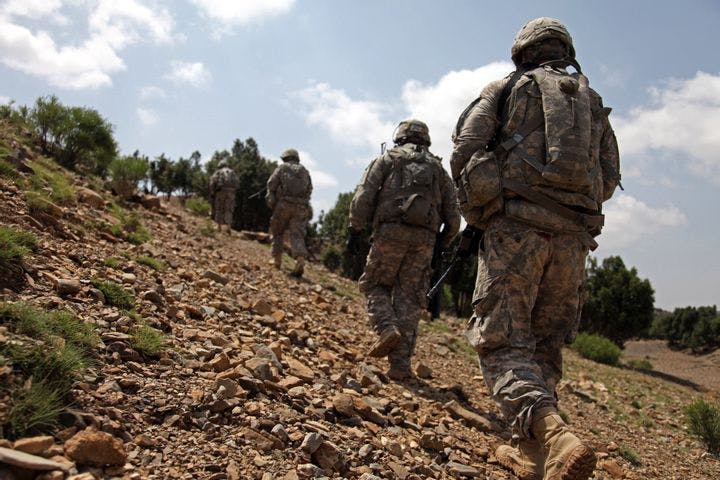Spring 2008
The New Infantry Epoch
– The Wilson Quarterly
America's enemies have shifted battlefields to cities, jungles, and mountains, where the U. S. military's technologically superior machines are ineffective. As a result, U. S. infantry soldiers now suffer four of every five combat deaths.
An epochal shift in the immemorial cycle of war is under way, writes retired major general Robert H. Scales, the former commandant of the Army War College. The infantry is back. America’s enemies have learned that they can’t win blitzkrieg-age wars, so they no longer fight them. They have moved the battlefields to cities, jungles, and mountains, where the U.S. military’s technologically superior machines are ineffective.
“The enemy chooses to fight as infantry because he can win the infantry fight,” Scales says, and America’s experience in Iraq and Afghanistan shows that the nation has no choice but to meet its opponent on uncongenial terrain.
In recent wars, he writes, infantry soldiers have suffered four of five combat deaths even though they make up less than four percent of U.S. military personnel. In wars waged with armor, airpower, and other heavy armaments, the kill ratios were skewed in America’s favor: In the World War II Pacific campaign, 13 enemy soldiers died for every American killed; in Europe against the Germans, the ratio was 11 to 1; in Korea, 13 to 1. But in the second battle of Fallujah, in November 2004, the ratio in close combat narrowed to 9 to 1, and for soldiers fighting inside buildings, the ratios were “much closer to parity,” Scales writes.
For too long, the Defense Department has spent a major share of its budget on aircraft and ships—big-ticket items made by big corporations. Now it needs to put its money where its casualties are, Scales writes. The country needs to invest more in lighter, fuel-efficient vehicles that can operate in distant locales for extended periods, low-flying aerial drones to protect the lives of troops who search out the enemy and now suffer more than half of all casualties, light body armor, and telecommunications that allow foot soldiers to see and talk to their units.
Most important, Scales argues, the Pentagon should pay infantrymen better. Compensation should reflect the risks soldiers face, not just their technical skills. Foot soldiers should also be allowed to retire earlier than other personnel. The infantry, he says, should be manned by the military’s best and brightest, because mature, intelligent, well-led, well-trained, and motivated soldiers are “far more effective in the close fight and far less likely to die.”
* * *
The Source: "Infantry and National Priorities" by Major General Robert H. Scales (Retired), in Armed Forces Journal, December 2007.
Photo courtesy of Flickr/DVIDSHUB
